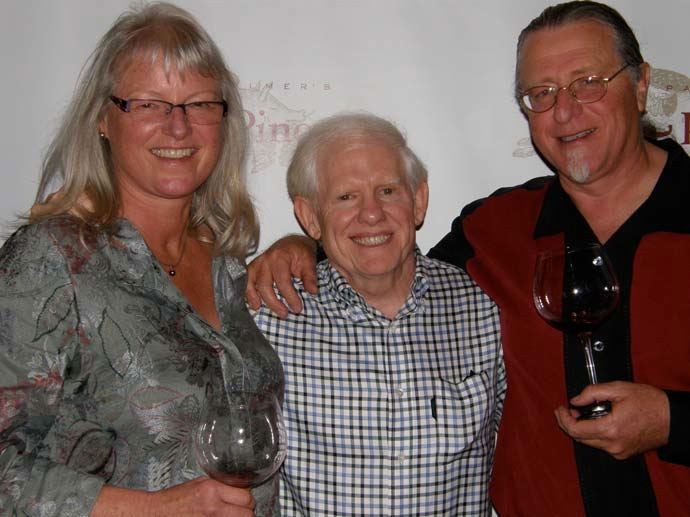Winemaker Burt Williams: An Extraordinary Intuition for Crafting Pinot Noir (cont'd)
The pair offered quite a contrast. Burt was burly, unassuming, had a hearty laugh, and preferred colorful short sleeve
sport shirts with suspenders. His wife, Jan, made the shirts for him. Ed was a handsome sort, more
outgoing, with a sly sense of humor, and often outfitted in tee shirts, shorts and boots. They held back a significant amount of their
production for their own enjoyment, and truly enjoyed their craft. For the most part, they shunned publicity,
declining to put up a Williams Selyem sign at their modest wineries and never had a tasting room,
preferring to offer tasting by appointment once they were established.
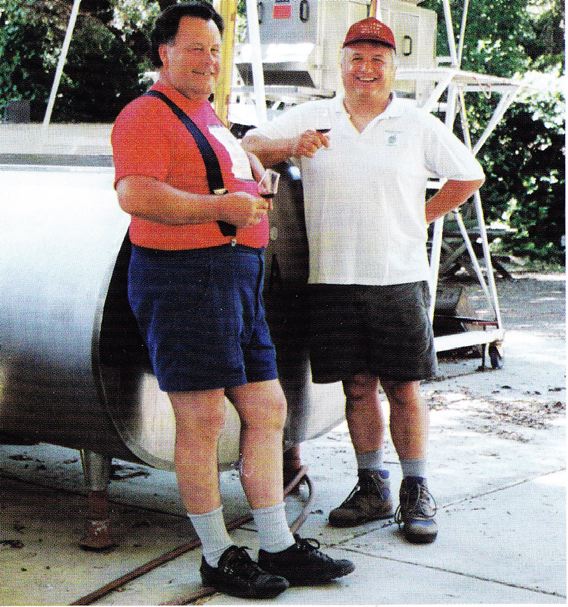
For many years, Williams and Selyem continued their day jobs (Burt as a pressman for the San Francisco
News Agency and Ed as a wine buyer and accountant for a Speer’s Market in Forestville) as they raised their
families, taking vacations at crush time to make the wines. They had an ideal business relationship: Williams
directed the winemaking and Selyem managed the money and the sales and distribution of the wine. Williams
noted, “We never took any money out (initially), grew 25% per year, and kept putting any profits back into the
business.” Spouses Gayle Selyem and Jan Williams were also partners in the winery which early on hired no
outside help. It wasn’t until late 1989, after moving into their winemaking facility on Allen’s property that the
partners quit their day jobs and worked full-time at the winery.
The partners struggled at the onset but found some angels early on. Williams recalls that in 1982, Marvin
Schaeffer came to the winery when it was located in a leased garage on River Road in Fulton and tasted some of the
Williams Selyem Pinot Noirs. He said, “These wines are fantastic. How could they be any better?” Williams
told him he could make the wines even better if he had some new oak barrels which were costing $350 to $400
at the time. Schaeffer wrote out a check on the spot for 10 to 12 new oak barrels, handed it to Williams, and
said, “Use it for a while. I don’t need it.” It wasn’t until 1994, that Schaeffer would accept repayment. Williams
recalls their good fortune with a sigh, “Magic things happen once in a while.”
The pair began buying grapes from Joe Rochioli in 1979 before they were bonded. Williams recalls that Joe
sold them their first Pinot Noir from the coveted West Block of his vineyard for $550 to $600 a ton. Growers
like Joe had it tough at the time. Joe was selling most of his Pinot Noir to Korbell for their sparkling wine.
Premium Pinot Noir was picked at 18º brix and sold for about $500 a ton. From 1979 until Williams Selyem was
sold in 1997, Williams Selyem and Gary Farrell were the only producers that received West Block fruit (The Williams Selyem
bottling from West Block was labeled as “Rochioli Vineyard”). Joe’s son, Tom, who would take over the
winemaking at Rochioli Vineyards & Winery in the early 1980s (Gary Farrell crafted the first Rochioli brand
Pinot Noir in 1982), kept a good part of the fruit for Rochioli’s own West Block bottling. It would have been
easy, and certainly more financially rewarding, for the Rochiolis to keep all the West Block fruit for themselves, but their generosity and friendship would prove critical for the future success of Williams Selyem. Joe Rochioli
and Rochioli Vineyard West Block pictured below a few years ago.

Since Williams had spent at least a significant part of his life in the Russian River Valley, he knew where the
vineyards were located. Fortunately, in the late 1970s and early 1980s, there was plenty of good grapes and
they were cheap. In 1980 and 1981, Burt and Ed sourced grapes from Iron Horse and from 1982 to 1986 from
the Dutton’s Arrendell Vineyard.
Grape sources would come and go, such as the Buena Tierra Vineyard (planted in 1978 and one of the oldest
Pinot Noir vineyards in the Russian River Valley) and Cohn Vineyard (first used as a vineyard source in 1993),
and others never proved acceptable to Williams (for example, Thieriot Vineyard). In 1988, fruit from the
Summa Vineyard was offered to Williams Selyem. The vineyard was located in the far reaches of West
Sonoma County in the region now known as the true Sonoma Coast and was Williams Selyem’s first venture
into this very cool growing region. Wine had been made from the vineyard and Williams liked it. The only problem was, the Zellers, who owned the vineyard, wanted $1,000 per ton for the grapes. Williams Selyem
was only paying Rochioli $800 to $850 per ton at the time. Williams had to tell Joe Rochioli that he would have
to charge them $1,000 per ton, as they just wouldn’t feel right paying more for grapes from Summa Vineyard.
Summa Vineyard was situated in a very marginal location that was buffeted by wind and consumed by fog,
often suffering poor fruit set, but produced very dense, complex wines. Williams had to enlist the services of a
vineyard consultant to direct the farming at Summa Vineyard in the early 1990s.
Also in 1987, Joe Rochioli introduced Burt and Ed to Howard Allen who owned a vineyard farmed by Rochioli
directly across Westside Road from Rochioli’s vineyard. Allen Vineyard became a single-vineyard bottling in the
Williams Selyem lineup beginning the same year. The partners also developed a long-term relationship with the
Pellegrini family who owned the Olivet Lane Vineyard on West Olivet Road in the Russian River Valley, and
released their first Olivet Lane Vineyard Pinot Noir in 1987. A photo of the Olivet Lane Vineyard in recent years
is shown below. For Bob Pellegrini, it was the first time their fruit had been handled in an artisan fashion, and
their cordial relationship would last 11 years. Hirsch Vineyard (1994), Coastlands Vineyard (1994), and
Precious Mountain Vineyard (1996), all in the far western reaches of the Sonoma Coast, and Ferrington
Vineyard (1993) in the Anderson Valley were added in later years.
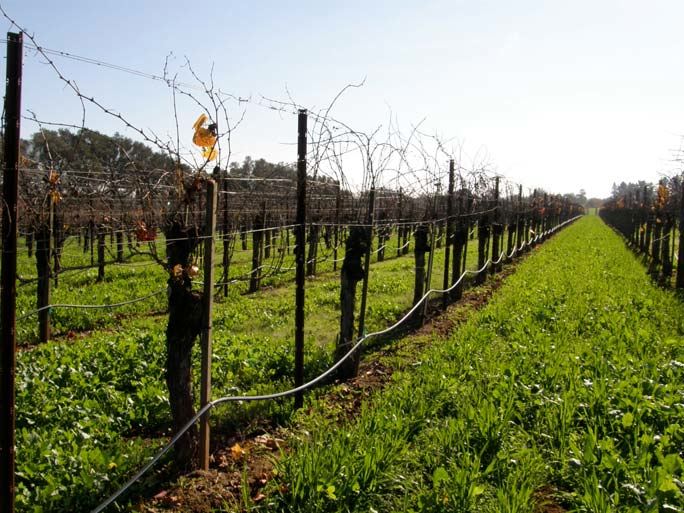
Rochioli Riverblock Vineyard was added to the Williams Selyem lineup as a vineyard designate in 1994. 1997
was the last offering of Williams Selyem Rochioli Vineyard Pinot Noir from the original West Block plantings
because the original West Block had to be pulled out due to phylloxera and virus infestation and subsequently
replanted. The Rochioli Riverblock was groomed to replace West Block fruit and initially was used in the
Williams Selyem Russian River Valley blend (first produced in 1988), later as a “Riverblock” vineyard
designate, and then as “Rochioli Riverblock Vineyard.”
Williams wanted the best fruit he could get his hands on and he would pay top dollar for it. He would pay a
premium for low yields, sometimes 50 percent to 150 percent more than the going prices for Pinot Noir. All
contracts except Olivet Lane were verbal, sealed with a handshake. The Pellegrini family wanted some type of
formal agreement so a simple one-page contract was drawn up and signed. Grapes were always paid for by
the ton or the row and not by the acre. Many growers were struggling, so Williams Selyem would occasionally
pay for grapes before harvest and lend money to growers when they need it. It was clear to Williams that his
grape sources were critical for his success.
Leno Martinelli, a legendary winegrower in the Russian River Valley, was an early source of Zinfandel for the
fledgling Hacienda del Rio Winery. Giuseppe and Luisa Martinelli planted their Jackass Hill Vineyard in 1899.
Leno Martinelli was given the Jackass Hill Vineyard at the age of 16 and was to farm the vineyard every year
thereafter, making wine each year from the vineyard as well. The Williams Selyem Leno Martinelli Zinfandel
was to become a staple in the Williams Selyem lineup. Williams recalls stopping by Martinelli’s house and
Leno would go to the basement, pull out an old bottle, say one from 1947, and they would all drink it together.
The wines were always marvelous, according to Williams, and drank more like a first growth Bordeaux than a
Zinfandel. He remarked, “No bottling of any grape varietal on this planet has more power combined with such
velvety texture.” Williams Selyem produced a Zinfandel from fruit grown at Jackass Hill Vineyard from 1979
until 1992. Early on the wine was label “Hillside Vines,” and later Leno Martinelli Vineyard. Photo below shows
Leno Martinelli on his tractor at Jackass Hill Vineyard in 1950.
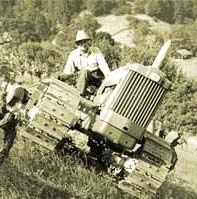
Williams recalls that he and Ed visited their vineyards during the summer and two to three times a week near
harvest when they took 5 gallon buckets of grapes back to the winery as samples. Grapes were not picked
solely on sugar levels, instead focusing on acidity which was considered key for aging. Hydrometers were
used to run titratable acidity and pH levels. Williams said, “The goal was to pick at a time when they could get
the most out of the vineyard without additions.” He emphasized the importance of spending time in the
vineyards and “paying attention,” something that winemakers of the 1980s were not want to do. As an
example, he remembers 1989 at Olivet Lane Vineyard. Normally picking would begin at 23.5º to 24.0º Brix, but
in this vintage the grapes only reached 22.5º Brix and the acidities were dropping. A decision was made to
pick. It rained the next day (Williams admits he did not predict the rain), preventing pickers from getting into
the vineyard for a couple of weeks, and Williams Selyem was the only winery to make Olivet Lane Pinot Noir
that year.
Preserving vineyard character was top priority and that is how the idea of vineyard designated wines evolved.
Williams Selyem was not the first winery in California to vineyard designate Pinot Noir (Acacia Winery has that
honor), but Williams Selyem made household names of vineyards like Rochioli, Allen, Olivet Lane and Summa.
However, not every vineyard met Williams’ high standards and only the best were deemed able to stand on
their own as a vineyard designate. Grapes from growers that did not fit into the Williams Selyem vineyard
designate program were blended and bottled as Sonoma County, Sonoma Coast and Russian River Valley.
With carefully chosen grape choices, Williams’ winemaking acumen, and the partner’s commitment to quality,
Williams Selyem was poised for success. Ironically, it was the partner’s limited capital that led to their good
fortune. Burt and Ed were forced to perform all the work in the winery themselves. As it turned out, and North
American winemakers eventually came to realize this, Pinot Noir was the one grape that demanded careful
handling, constant attention and benefited the most from a hands-on approach. As Williams has noted, “We
employed old, traditional methods of winemaking, which turned out to be the best ways. We kept it basic and
simple: no pumps, no filtering and did nothing that we didn’t have to.” They followed the advice of local veteran
Italian winemakers who told them to improvise rather than buying any new equipment.
Their first sorting tray was built from a sheet of plywood covered with plastic, and this allowed them to make a
vigorous selection of grapes that went into the wines. Initially they borrowed a used de-stemmer from Lytton
Springs Winery, eventually buying it in 1984. Their hand-crank press dated to 1915 and was borrowed initially
from a family friend. When they first obtained the press on loan, it hadn’t been used in forty years, but were
able to restore it to working order and used until 1989 when they were able to buy a new basket press.
Initially they used small 40-pound lug boxes to hold the grapes at harvest. The boxes were loaded onto a
350,000-mile Chevrolet pickup parked at the end of the rows, weighed, and taken to the winery. By 1987, there were far too many lug boxes. Quarter-ton wooden bins were then used but they needed a bin dumpster above
ground to send the grapes onto the sorting table, and in turn, the de-stemmer. Williams’ son-in-law designed
and built a unit to accomplish this transfer of grapes. (The photo above of Burt & Ed shows this unit in the
background). By 1991, they had acquired a new de-stemmer which further improved the quality of the wines.
Halved double-wall stainless steel dairy tanks were used for fermentations. The partners had seen them in use
at other wineries such as Edmeades and Hop Kiln. In the early 1980s, the tanks were no longer in use for
storing milk and they were inexpensive to buy, selling for fifty cents to a dollar and a quarter per gallon. They
were constructed of better quality stainless steel than containers currently in use in the wine industry. The
main advantage of the tanks was the better cap to juice ratio, that is, more cap surface area compared to the
traditional six foot high fermenters in use at the time. Extraction was improved, and punch downs four to six
times a day could more easily and effectively be employed. On newly acquired tanks, Williams’ son-in-law
would cut out the extraneous metal, re-plumb them and install the cooling systems required to control
fermentation temperatures. These tanks are still in use at Williams Selyem and other wineries today.
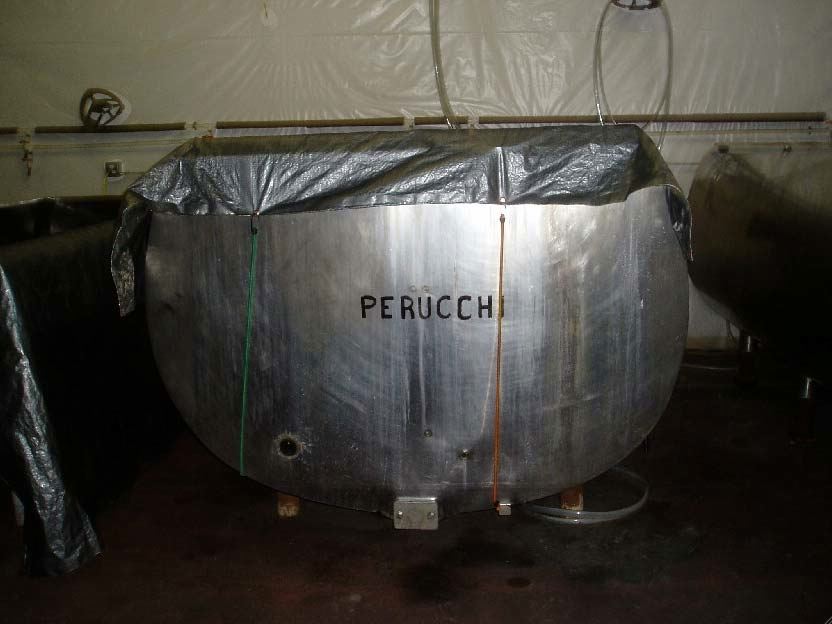
The tanks were placed on a cement pad adjacent the garage in Fulton. Cargo shipping containers were rigged
to store barrels. The containers once held New Zealand lamb carcasses.
The partners delivered about 15% of their production to select retailers with good palates and restaurants
because they enjoyed meeting people in the wine business and relished the personal contact. This was how,
for example, they met Manfred Krankl, who was working at Campanile restaurant in Los Angeles. Recently,
Krankl remarked, “I’ve always adored the guy (Williams) and he has been a big influence on my winemaking
philosophy: something he probably doesn’t even know about. I would put him in the top three folks that have
shaped my thinking concerning wine.” Retailers and restaurateurs were charged full retail price for the wines
and wines were only sold to those who paid up. Burt and Ed attended as many local wine tastings as possible
early on to obtain exposure for their wines, and entered a number of wine competitions.
The turning point in the notoriety of Williams Selyem came in 1987. The 1985 Williams Selyem Rochioli
Vineyard Russian River Valley Pinot Noir won the Sweepstakes at the California State Fair Wine Competition
and became the most seminal wine in the history of California Pinot Noir. The wine was voted the best of the
2,316 wines entered by 416 wineries in 1987. 295 cases of this wine were produced and it was sold for $16 a
bottle. An article appeared in the June 27, 1987, business section of The Press Democrat (Santa Rosa)
announcing the top prize won by Williams Selyem. Note the incorrect name of the winery in the article copied
below. The early winery mailers written by Ed and sent to consumers referred to the name of the winery as
Williams & Selyem Winery, to be later shortened to Williams Selyem, but the two names were never
hyphenated.
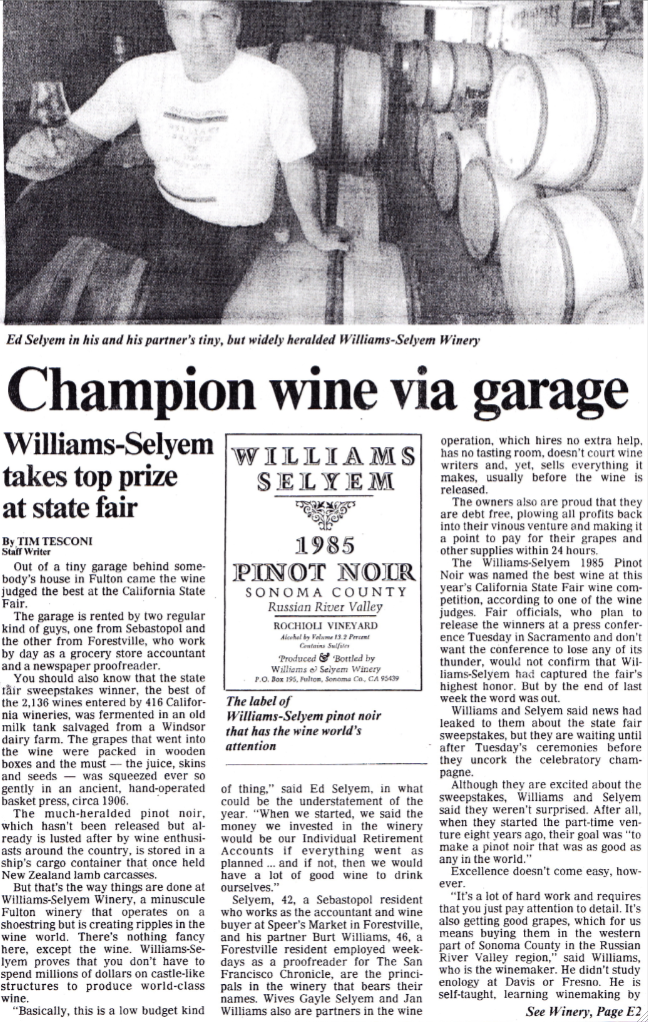
From 1980 to 1984, Rochioli Vineyard fruit was blended with other vineyard sources, but in 1984, Williams felt
the Rochioli Vineyard Pinot Noir was complete enough for a vineyard designated bottling on its own, although it
was deemed too fruity. To counter the fruitiness, Williams increased the percentage of new oak, aging the
1985 Rochioli Vineyard Pinot Noir in 100% new oak for 17 months. This was the first Williams Selyem Rochioli
Vineyard designated Pinot Noir. Williams’ uncanny intuition was correct and he would remark, “It put us on the
map.” The 1986 Rochioli Vineyard Pinot Noir was priced at $25 a bottle, a significant increase that buyers did
not blink at.
Favorable press soon followed and demand snowballed. Williams Selyem was showered with accolades. Wine
writer Dan Berger said, “Best Pinot Noir in America and a rival to the best in the world.” Respected wine writer,
Matt Kramer, declared, “Williams Selyem is the best Pinot Noir in California. Pinot Noir of delicacy, finesse and
profound flavor.” Anthony Dias Blue, a leading worldwide food, wine and lifestyle authority, chimed in, “Williams
Selyem Pinot Noir shines above the rest.” James Laube said, “Winemaker Williams had a tremendously
intuitive sense of how Pinot Noir should be vinified and how it should taste.” Williams Selyem Pinot Noir was
served to several Presidents and dignitaries at State dinners through the years which added to its notoriety.
Becky Wasserman visited Williams Selyem with her husband and vigneron Michel Lafarge in 1987. They
tasted the 1985 Sweepstakes winning wine and the 1986 Rochioli Vineyard Pinot Noir. Wasserman wanted 50
cases of the 1985 and 1986 Williams Selyem Rochioli Vineyard Pinot Noirs to export to Burgundy! Williams
Selyem could only give them 1 case of the 1985 vintage and 25 cases of the 1986 vintage. When thinking
back, Williams exclaims, “Unbelievable - wow! We had to pinch ourselves. The wine appeared on restaurant
lists in Burgundy.”
At the Wine Spectator Experience in New York in 1986, Williams was named one of America’s top new
winemakers along with George Bursick, Tony Soter, Randall Grahm and Randy Dunn. At this event, Williams
mixed with distributors and soon Williams Selyem appeared on the wine lists of notable restaurants such as
Charlie Palmer’s Aureole in New York.
After winning the Sweepstakes Award, Williams decided to get his wines into the best restaurants and resorts
in Monterey and Carmel, knowing that affluent people visited the resort area from all over the United States.
Diners were soon calling Williams Selyem from everywhere in the United States, asking for wine. Americans
had never tasted any Pinot Noir like Williams Selyem and they clamored to acquire their share.
A small mailing list had been established which was the brainchild of Ed Selyem. The partners knew that their
best chance for financial security was to sell their wines at full retail directly to consumers. This was an
ingenious idea at the time, a model for practically every small Pinot Noir producer to follow. Many early
customers were winemakers. Dan Duckhorn was drawn to Pinot Noir after tasting Williams Selyem Pinot Noir
and blames Williams for leading him on the path to founding Goldeneye in the Anderson Valley. Below is my
confirmation after joining the mailing list in 1989 as “number 3081.”
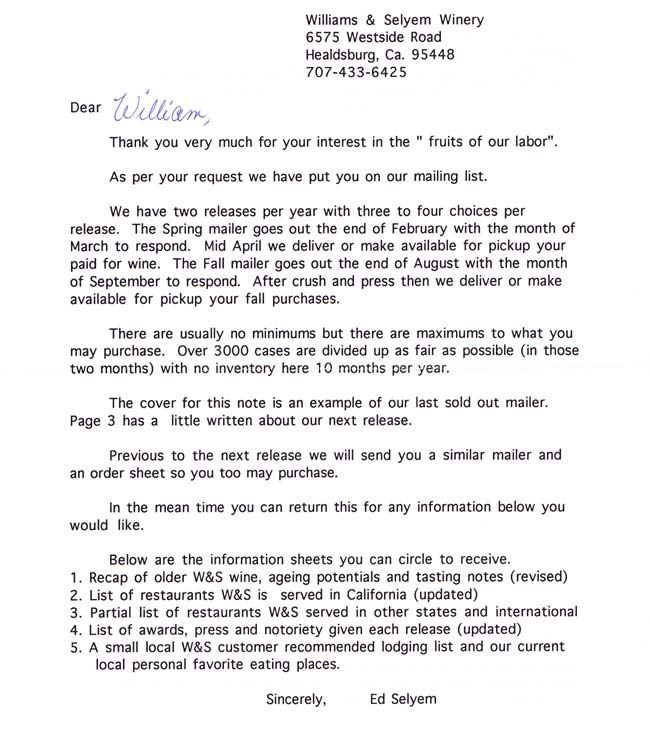
When the Sweepstakes Award was announced, the mailing list was flooded with requests from eager buyers.
The mailing list became so popular a waiting list was eventually developed for those begging to get on the
mailing list. Eventually, more than 85% of the people on the list bought wine when it was offered. Ed managed
the list masterfully, and enjoyed being in contact with, visiting with, and learning from devoted customers.
Eventually, the list required two full-time employees to oversee it and its delicate management became a
headache.
As production escalated and the winery work proved more demanding, a number of people offered their help at
harvest. Bob Mosby, who is now the General Manager at Benovia Winery in Santa Rosa, was one of the first,
dating back to 1989, to volunteer his time at harvest. Nikolai Stez, who grew up in the Russian River Valley,
became a regular at harvest and eventually spent 17 years as an assistant winemaker for Williams at Williams
Selyem. Inspired by Williams, he now is the proprietor and winemaker for Woodenhead Vintners in Santa
Rosa. Nikolai is pictured below with his partner, Zina Bower, at the 2010 Pigs and Pinot event in Healdsburg.










